When it comes to China Jewish tour, we must mention Tianjin and Kaifeng. These two places are attractive for those who want to know the history of Jews in China and have a nice tour in China. So why is this tour so attractive? There are various attractions included. During these 7 days, you can enjoy a Jewish tour from Beijing to Luoyang. Through a Jewish tour to Beijing, you have a chance to experience Hutong culture, climb the Badaling Great Wall, visit Tian’anmen Square, walk into the Forbidden City, exercise in the Temple of Heaven, and enjoy the Summer Palace. Through a Jewish tour to Tianjin and Kaifeng, you will visit Tianjin Synagogue and stroll along the Five Major Avenues in Tianjin, photograph Longmen Grottoes and enjoy the sound of ancient bells in White Horse Temple in Luoyang, as well as learn the history of Jews in Kaifeng Museum and Nan Jiaojing Hutong in Kaifeng. You see, a Jewish tour with Tianjin and Kaifeng is certainly worth a visit! Don’t hesitate. All you have to do is just join us by choosing this 7-day China Jewish Tour.

Welcome to Beijing, the capital of China. Beijing is a booming global metropolis with an area of about 16,400 square kilometers. Beijing now has a population of over 21 million. It boasts a charming history and rich cultural heritage, such attractions as Hutongs, the Great Wall, the Forbidden City, the Temple of Heaven, and the Summer Palace. Upon arrival, our local guide will hold your name and wait for you at the airport and then take you to your hotel. Then you could have a good rest and adjust yourself from jet lag. Your memorable 7-day tour is coming!
Today, your 7-day China tour begins. In the morning, you will go to the Hutongs for sightseeing. Hutongs are alleys leading to residential areas. There are thousands of Hutongs in Beijing, formed during the Yuan (1271-1368), Ming (1368-1644), and Qing (1636-1912) Dynasties in Chinese history, most of which were built during the Yuan Dynasty in the 13th century. Hutongs played an indispensable part in local transportation. Now, the original and unique charm of Hutongs is preserved. The residential areas, along the Hutongs, are Siheyuan, a building which consists of four houses in the east, west, north, and south in a square and symmetrical form. You can take a rickshaw to visit Hutongs and closely experience the Hutong culture. The local people are very hospitable to foreigners, and you can walk into a Siheyuan to see a traditional Beijing-style courtyard and ingenious architecture style as well as to take photos with the permission of them.
After lunch, we will drive northwest for about 1 hour to visit the Badaling Great Wall, 62 kilometers away from Hutongs. The Badaling Great Wall is an important part of the Great Wall system, a marvelous defensive project built during the reign of Emperor Qinshihuang. He was the first emperor of the Qin Dynasty (221-207BC). The Badaling Great Wall was built to ward off the invasion of nomads from the north. Now, the Badaling Great Wall is one of the best-preserved and most representative sections of the Ming Great Wall. Though it has long lost its military role, with its unique charm, it has attracted tourists from home and abroad and become a world-famous tourist resort. Since its opening, the Badaling Great Wall has received more than 130 million visitors, including 372 foreign heads of state and numerous world celebrities. On October 14, 1986, Britain’s Queen Elizabeth II visited the Badaling Great Wall and said, “I have been to many places, and the Great Wall is the most beautiful one.” The Badaling Great Wall is certainly worth a visit. Let us go climbing and enjoy the splendid scenery.
Options:
Peking Roast Duck dinner. Peking Roast Duck is a well-known delicacy. With a history of about 1500 years, Peking Roast Duck is a royal dish in ancient China. It is exquisite, exteriorly-crisp but interiorly-soft duck. The local chef will slice up Peking Roast Duck beside your table, and offer thin pancakes as well as condiments, such as onions, sweetish sauce, or sugar. Our local guide will teach you how to eat Peking Roast Duck in an authentic way.
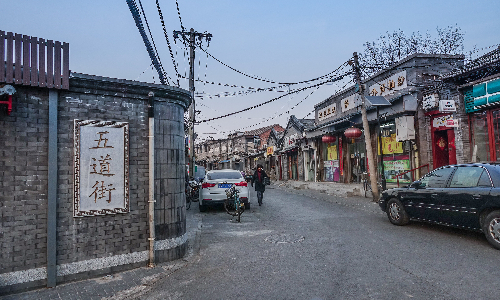
 Tianjin
Tianjin After breakfast, you will go to Tian’anmen Square for sightseeing. Tian’anmen Square is located in the center of Beijing. It covers an area of 440,000 square meters, with 880 meters long from north to south and 500 meters wide from east to west. Tian’anmen Square can accommodate 1 million people for grand gatherings; thus, it is the largest city center square in the world. It consists of the National Flagpole, the Monument to the People’s Heroes, the Chairman Mao Memorial Hall, and the Zhengyangmen Gate Tower. There are numerous big events happened in Tian’anmen Square. On October 1, 1949, Chairman Mao, standing on the Tian’anmen Gate Tower and waving to 300,000 people, solemnly proclaimed to the world “The People’s Republic of China is established today!” Since then, Tian’anmen Square has become an important place for the Communist Party of China and the whole nation to celebrate important festivals.
After walking through Tian’anmen Square and the Meridian Gate, you will enter the Forbidden City (closed each Monday). The Forbidden City, also known as the Palace Museum, is the imperial palace of the 24 emperors of the Ming and Qing Dynasties in China. It is one of the largest and best-preserved ancient wooden-structure palace complexes in the world and was listed as a World Cultural Heritage in 1987. The Forbidden City centers around three main halls, covering an area of about 720,000 square meters, with a construction area of about 150,000 square meters. There are more than 70 palaces, large and small, and over 9,000 rooms. Hall of Supreme Harmony, one of the three main halls, was built in 1420 in the Ming Dynasty. After its completion, it was repeatedly burned down and was rebuilt many times. What we are visiting today was rebuilt in 1695 in Qing Dynasty. Hall of Supreme Harmony is a place where 24 emperors held grand ceremonies, such as emperors’ succession, weddings, and so on. In addition, emperors accept greetings sent by officials and give banquets to royals and officials here on New Year’s Day and the Winter Solstice.
After lunch, you will visit the Temple of Heaven, where the ancient emperors worshipped the god of heaven and prayed for good harvests in the Ming and Qing Dynasties. It was built in 1420 and rebuilt several times. It occupies an area of about 2700,000 square meters and is the largest surviving temple complex in China. As a world-famous tourist attraction, the Temple of Heaven will amaze you with interesting experiences. The Echo Wall is one experience you can’t miss. If you and your friends stand on opposite ends of the Echo Wall and speak to each other through the wall, you will clearly hear their voices bounce back to you. Isn’t it amazing? Let’s have a try!
Then we will drive northwest for about 50 minutes to visit the Summer Palace, 23 kilometers away from the Temple of Heaven. The Summer Palace, formerly known as the Qingyi Garden, is a royal garden of the Qing Dynasty in China. It was built by Emperor Qianlong to delight his mother and was completed in 1764. It is the most beautiful and best-preserved imperial garden in existence in China, so it is praised as the Royal Garden Museum. Strolling around, you can see the longest corridor among the Chinese gardens, luminous colored drawings, finely designed and decorated pavilion, enjoy the beautiful scenery of lakes, and experience what ancient emperors often did in summer.
Your Beijing tour is about to end now and you will be transferred to the train station and take an estimated train G891 20:03/20:37 to Tianjin. Your local guide in Tianjin will then transfer you to the hotel.
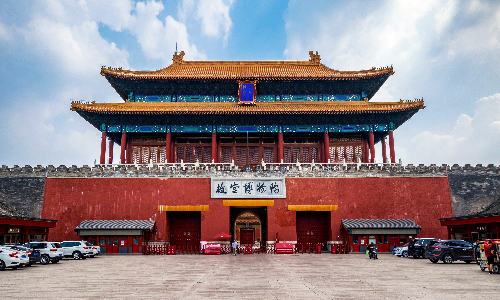
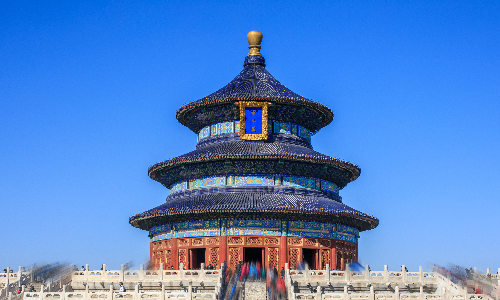
 Luoyang
Luoyang After breakfast, you will visit Tianjin Synagogue. Tianjin Synagogue is a historic building where Jews meet for religious worship and teaching. It was built in 1940 by raising funds. Tianjin Synagogue is a Gothic-style building, with the characteristics of European church architecture. Do you know Jews have had three close connections with Tianjin since 1860? In 1860, Tianjin was forced to open as a treaty port according to The Treaty of Beijing. In order to export capital, European and American merchants including shrewd Jewish businessmen poured in. At the turn of the 20th century, Jews were persecuted, so a large number of Jews left their hometown to seek a livelihood in China. During World War II, according to the Jewish Yearbook published by the United States in the late 1930s, a massive influx of Jews reached 3500 in 1935, which was the highest number of Jews on record in Tianjin.
Then you will visit the Five Major Avenues. Located in the downtown area of Tianjin, the Five Major Avenues is a general name of a block with five roads. It has more than 2,000 garden-style houses built in the 1920s and 1930s with different national architectural styles, with a construction area of over 1 million square meters. Boasting multitudinous styles, the Five Major Avenues is known as World Architecture Expo. The Jewish Community in Tianjin is well worth visiting. Jews in Tianjin concentrated in the Five Major Avenues and the White Loft. They had a relatively independent community of their own. Even during World War II, the Jewish Community in Tianjin also maintained its original ways of existence and became a refuge for Jews to escape the Nazi Holocaust.
Your Tianjin tour is going to end now. After lunch, our driver will take you to the train station. You will take an estimated train G1293 15:16/19:28 to Luoyang. Your local guide in Luoyang will then pick you up and transfer you to the hotel.
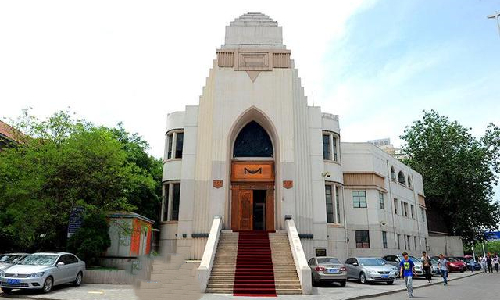
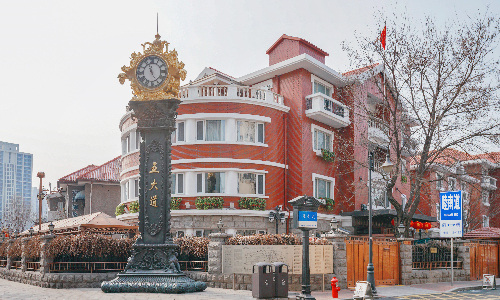
After breakfast, we will drive southeast for about 30 minutes to visit Longmen Grottoes, 20 kilometers away from the train station. Located in Luoyang, Longmen Grottoes owns a collection of ancient sculptures priceless to Buddhists. It is a treasure-house of stone-carving art which boasts the largest scale and largest number of Buddhas in the world, thus it is rated as “the peak of Chinese stone-carving art” by the United Nations Educational, Scientific and Cultural Organization. Longmen Grottoes was first dug in the reign of Emperor Xiaowen of the Northern Wei Dynasty (368-534) and finished in the late Qing Dynasty. It has been carved for more than 1400 years by craftsmen in more than 100 dynasties, making it the longest time-devoted grottoes. That sounds amazing! There are over 110,000 statues, mostly built for ancient royals. Empress Wu Zetian, the only orthodox female emperor in Chinese history, ordered craftsmen to carve a Buddha based on her appearance and manners. You can also appreciate precious inscriptions besides statues. I believe this will be a nice place to post on your Instagram.
After lunch, we will drive northeast about 55 minutes to visit White Horse Temple, 30 kilometers away from Longmen Grottoes. White Horse Temple was first built in 69AD in the Eastern Han Dynasty (25AD-220AD) and became the first government-run temple to be built after Buddhism was introduced into China. Since then, the White Horse Temple had been preaching Buddhism to Korea, Japan, and Southeast Asia, popularizing it in Asia, and then to Europe and other places, thus White Horse Temple can be regarded as a shrine for Buddhists around the world. It is worthy of the praise “the first temple in the world”. Let’s enjoy Chinese temples and the sound of ancient bells here!
What a wonderful day! Let’s return to our hotel and have a good rest now.
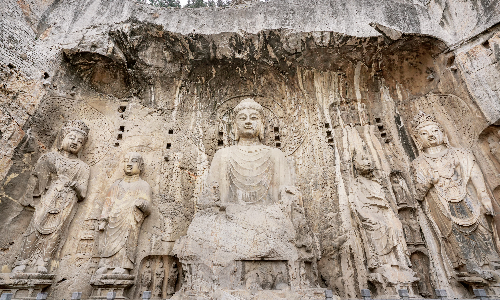

 Kaifeng
Kaifeng Luoyang
Luoyang After breakfast, we will drive eastward for about 3 hours to visit Kaifeng Museum (closed each Monday), 213 kilometers away from Luoyang. Located in Kaifeng, Kaifeng Museum is a local comprehensive museum integrating exhibitions, cultural relic collection and protection, as well as publicity and education. It was built in 1962, covering a total area of 54,286 square meters. Walking into the museum, you will enjoy exhibitions of fine stone-carving, of woodcut paintings originated in Zhuxian town (a small town in Kaifeng famous for its woodcut paintings), and of ancient cultural relics introducing the history of Kaifeng. There is a Judaism Exhibition Hall on the fourth floor. You could see several inscriptions recording the religious activities of the Jews in Kaifeng. Information about Jews’ political status, social occupations, and living conditions in ancient China is also introduced. Glancing over these cultural relics, you may surprisingly find that Jews had been successfully assimilated into the community.
Then we will drive eastward for about 30 minutes to visit Nan Jiaojing Hutong, 10 kilometers away from Kaifeng Museum. Nan Jiaojing Hutong is a place that inhabits descendants of the original Jewish settlers. It is supposed that the ancestors of Jews in Kaifeng may have come from Persia or India in the Song Dynasty (960-1279) in the 12th century. The 13th-century Italian tourist Macro Polo may have heard of the Jewish settlement in China, yet the existence of Jews in China was largely unknown to the outside world until Matteo Ricci (a Catholic Jesuit missionary and scholar) met a Jew in Kaifeng in the early 16th century. Since then, several Jesuits visited Kaifeng and they found out that there was a Jewish community. At that time, Jews in Kaifeng lived in isolation, still preserving Jewish tradition for hundreds of years. With time passing by, they were gradually assimilated into the locals. By the 17th century, this assimilation had intensified, leading to changes in Jewish beliefs and rituals, social and linguistic traditions, as well as widespread intermarriage with other ethnic groups. In the middle of the 19th century, with the resignation of the last Jewish priest, the Jews in Kaifeng gradually became indifferent to Judaism, and almost entirely mingled with the locals.
Today’s journey is going to end now. Let’s say goodbye to Kaifeng. Our driver will take you to the hotel in Luoyang.
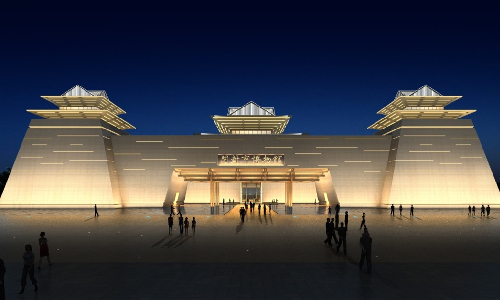
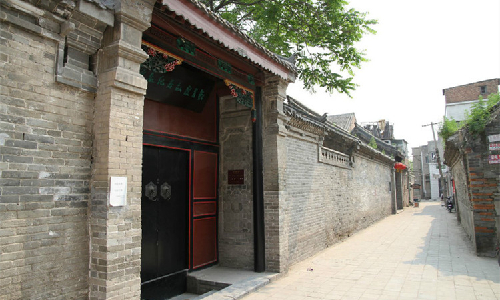
Today your 7-day China Jewish tour comes to an end. We will take you to the airport to catch your flight and say goodbye to you. We are looking forward to serving you again in other cities of China.
Author: Gao Yamei
Proofreader: Li Yiwen
| City | Five Star hotel list | Four Star hotel list |
|---|---|---|
| Beijing | Sunworld Dynasty Hotel Beijing Wangfujing | Sunworld Hotel Wangfujing |
| Tianjin | The St. Regis Tianjin | Holiday Inn Tianjin Riverside |
| Luoyang | Lee Royal Hotel Mudu | Xinyuan International Hotel |
 |
![]() About your child or infant, please contact us for a discounted price.
About your child or infant, please contact us for a discounted price.



We started with a few days in Beijing & ended in Shanghai, from where we visited the Forbidden City and Great Wall. In between we visited Terra Cotta Warriors Museum, Panda Base, Shanghai Disneyland.

We had a wonderful holiday in China which will remain long in the memory. China is a breathtakingly beautiful country full of splendid temples and palaces, mountains and rivers, peaceful rural scenes and bustling shopping streets.
 QUICK ENQUIRY
QUICK ENQUIRY